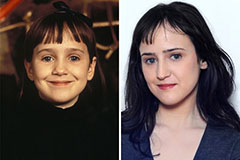From its humble beginnings as a mechanical/analog/early digital marvel to today's sophisticated smart/high-definition/ultra-high definition screens, television technology has undergone a remarkable/profound/dramatic transformation. The invention/development/conception of the first television set in the early 20th century marked a seminal/pivotal/historic moment in communication history. Early broadcasts were grainy/limited/low-resolution, but over time, advancements in electronics/transmitting/display technology led to dramatic/significant/noticeable improvements in picture quality and sound clarity.
- The transition from analog/black-and-white/CRT televisions to digital/color/LCD screens revolutionized the viewing experience, bringing vivid/realistic/enhanced images and rich/multifaceted/stereo sound to our living rooms.
- Cable/Satellite/Streaming services expanded programming options, providing viewers with a vast/extensive/unparalleled choice of channels and content.
- The advent of flat-screen/HDTV/4K televisions further enhanced picture quality, making television the premier entertainment/home cinema/visual medium in many households.
Today, television check here technology continues to evolve at a rapid/accelerated/breakneck pace, with innovations such as OLED/smart TVs/3D promising even more immersive and interactive viewing experiences. The future of television is bright/exciting/full of possibilities, and we can expect further breakthroughs that will continue to shape the way we consume entertainment and information.
Smart Televisions: Transforming the Viewing Experience
Smart TVs have become ubiquitous in modern dwellings, revolutionizing the way we consume content. With built-in Wi-Fi capabilities, these innovative devices allow users to stream a vast library of programs on demand. Furthermore, smart TVs offer immersive features such as voice control, smartphone connectivity, and personalized recommendations, creating a truly dynamic and seamless viewing journey.
Immersive Viewing Experiences: The Future of Television
Television is on the cusp of a revolution, with immersive viewing experiences poised to transform the way we consume content. Cutting-edge technologies such as virtual reality (VR) and augmented reality (AR) are blurring the lines between the real and the virtual, creating mesmerizing experiences that transport viewers into the heart of the action. Imagine a world where you can stand alongside your favorite characters, explore distant landscapes, or even engage in action-packed adventures, all from the comfort of your own home. This future holds immense potential for entertainment, education, and also social interaction.
- A exciting developments include 360-degree video, which allows viewers to rotate a scene, and interactive storytelling, where choices made by the viewer shape the narrative.
- Furthermore, advancements in display technology are bringing us closer to lifelike visuals with ultra-high resolutions and wider color gamuts.
With this technology continues to evolve, we can expect even more immersive viewing experiences that will reshape the future of television.
Television Programming Trends evolving
Television programming is in a dynamic state of evolution, with viewers demanding more diverse content than ever before. Audiences are increasingly turning to streaming platforms, which offer curated viewing experiences and a plethora of on-demand options. This shift has led to a surge in the production of original content, with studios vying for subscribers.
One notable trend is the rise of reality television, true crime shows, and dramatically-influenced programming that tackles pressing social issues.
Furthermore, there's a growing preference for bite-sized content, which caters to the digital-native lifestyles of modern audiences.
Ultimately, the future of television programming hinges on its ability to evolve and satisfy the ever-changing demands of audiences.
Television and Social Media: An Unbreakable Bond
In today's fast-paced world, broadcast media and online platforms have become intimately intertwined. Viewers are no longer passive consumers of content; they are actively interacting with their favorite shows and influencers through social media. This fusion has created a transformative opportunity for producers to strengthen relationships with their viewers in authentic ways.
Moreover, social media have become a indispensable tool for advertising television series. Networks are utilizing the power of social media to generate excitement around new releases and interact with audiences in real time. This dynamic conversation has reshaped the way television is experienced.
The Impact of Streaming on Traditional Television altered
The rise of streaming platforms has drastically impacted the traditional television landscape. With viewers now able to consume a vast library of content at their leisure, linear TV's dominance has waned. Traditional networks face the trend in viewing habits, causing a decline in ratings and earnings.
- Nevertheless, traditional television still maintains a significant audience, particularly for live events such as sports and awards shows.
- The future of television likely will be shaped by a blend that integrates the best aspects of both streaming and traditional TV.
 Mara Wilson Then & Now!
Mara Wilson Then & Now! Devin Ratray Then & Now!
Devin Ratray Then & Now! Michael Jordan Then & Now!
Michael Jordan Then & Now! Barry Watson Then & Now!
Barry Watson Then & Now! Mason Reese Then & Now!
Mason Reese Then & Now!